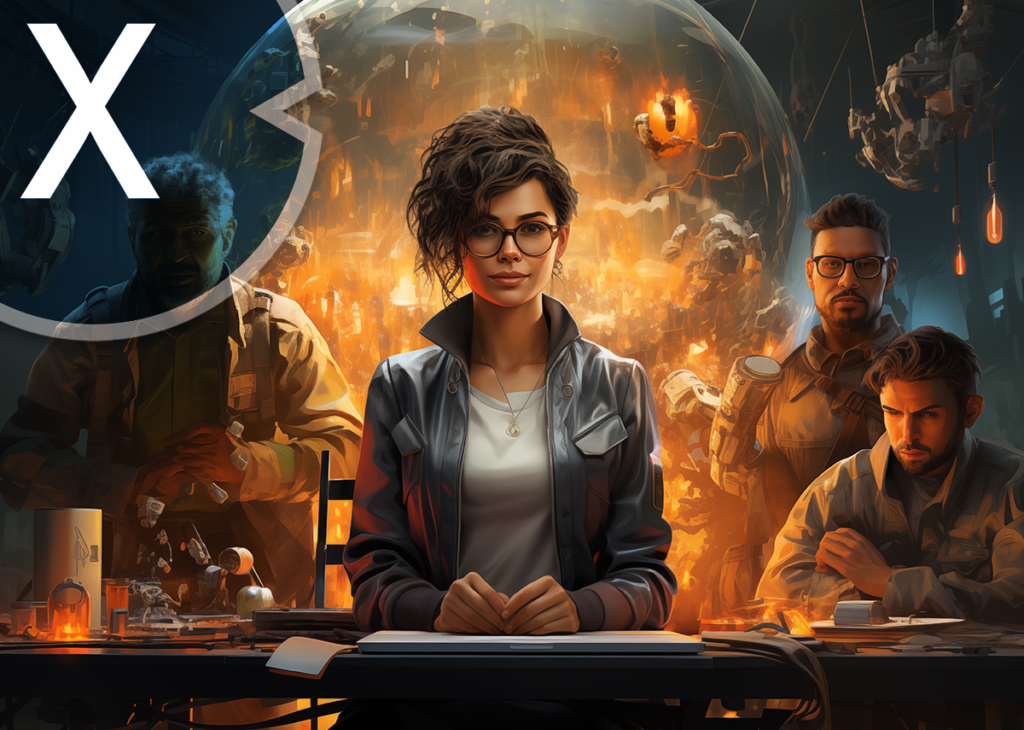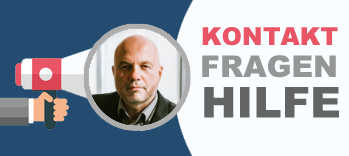French start-ups: Europe's defense through high technology with laser communication technology as an alternative to Starlink?
Xpert pre-release
Language selection 📢
Published on: July 22, 2025 / update from: July 22, 2025 – Author: Konrad Wolfenstein

French start-ups: Europe's defense through high technology with laser communication technology as an alternative to Starlink? – Image: Xpert.digital
Faster than fiber fiber, safer than radio: This laser innovation from France could become Europe's new lifeline
Europe's plan B for emergencies: This French laser technology is intended to end the dependence on the USA
The changing geopolitical landscape forces Europe to form a fundamental realignment of its defense strategy. This transformation focuses on innovative companies and future -oriented technologies that have the potential to sustainably shape the continental security architecture.
Suitable for:
- Military logistics: France's € 64 billion upgrading at a record pace and laying speed to the NATO-East flank
Why does France develop an alternative to Starlink?
The dependence on American technologies in strategic areas has proven to be a critical weak point. Starlink, the satellite internet system of Elon Musk, has demonstrated its central importance for modern warfare during the Ukraine War. At the same time, however, problematic dependence on a single private provider revealed.
The French answer to this challenge is embodied in the company Cilabs from Rennes, which has developed an innovative alternative. Instead of relying on conventional radio connections, the French start-up laser technology uses data transmission between satellites and ground stations.
The Tilba system (turbulence-induced link budget adaptation) of Cailabs offers decisive advantages over conventional systems. By using multi-tarpaulin Light Conversion (MPLC) technology, the optical ground stations can compensate for atmospheric turbulence and thereby establish stable data connections with speeds of over 10 gigabits per second.
How does French laser communication technology work?
The technical innovation behind Cailabs' system lies in coping with one of the greatest challenges of optical space communication: the disturbing effects of the atmosphere on laser signals. While conventional adaptive optics systems need complex mechanical components, Cailabs uses a purely optical approach.
The Tilba-Atmo System disassembles incoming laser beams into different modes and recombinates them coherently into a standard single fiber. This technology enables the distortion caused by atmospheric turbulence to correct without relying on moving parts.
For satellite-to-floor communication, CAILABS develops mobile and stationary ground stations that are able to pursue moving satellites and maintain stable laser compounds. The systems are compatible with international standards such as CCSDs and SDA and can support various data rates, protocols and modulation formats.
The Keraunos project, a collaboration between Cailabs, the French start-up Unseenlabs and the French defense innovation agency (AID) was carried out by the Keraunos project. In 2024, it was the first time to establish a stable laser connection between a nanosatellite in a low earth orbit and a commercial floor station.
Why is the EU investing 800 billion euros in defense?
The European Union has decided on an unprecedented upgrade program that will provide investments of around 800 billion euros by 2030. This sum is divided into various instruments and national contributions that are supposed to fundamentally strengthen Europe's defense skills together.
The heart of the EU initiative is the SAFE program (Security Action for Europe), which provides loans of 150 billion euros for joint procurement. In addition, the member states should be able to mobilize up to 650 billion euros for national defense spending by loosening the debt rules.
The urgency of these measures is justified by several factors. The EU Commission urgently warns of the possibility of a large-scale war with Russia and emphasizes that "history will not forgive us inactivity". Analysts assume that Russia could continue to expand its territorial ambitions by 2030 in the event of a success in Ukraine.
The strategic realignment is also accelerated by the uncertain American security guarantee under President Trump. European security experts emphasize that the continent can no longer rely on unconditional US support.
Suitable for:
- European military logistics according to the US model? Strategic teaching and a timetable for European defense logistics
What role does France play in the European defense strategy?
France positions itself as a driving force of European defense integration and is planning a massive increase in its military capacities. The French defense budget is to be doubled from currently 50 billion euros by 2030 to around 100 billion euros.
The French armaments industry is already an impressive basis for this expansion. More than 4,500 companies are active in the defense sector and employ around 200,000 people directly. The industry's annual turnover reached around 41.6 billion euros in 2022, with increasing tendency due to the geopolitical tensions.
France's strategic importance is also evident in the diversity of its defense capacities. The country has a complete military-industrial basis that ranges from nuclear weapons to fighter planes to the latest electronics. Companies such as Thales, Safran, MBDA and Naval Group are among the leading armaments companies in Europe.
France's focus is particularly remarkable on innovation and start-up funding in the defense area. The definition fund, which is equipped with 100 million euros, supports French technology companies whose expertise for military systems is crucial.
How does cooperation between established corporations and start-ups develop?
The European defense industry is experiencing a renaissance of innovation through the cooperation between traditional armaments companies and agile start-ups. These collaborations combine the experience and resources of established companies with the innovative strength and flexibility of young technology companies.
An outstanding example is the partnership between the German AI company Helsing and the French language model developer Mistral. This cooperation aims to develop artificial intelligence, especially for defense purposes, and to strengthen European technological sovereignty.
Helsing himself impressively demonstrates the potential of defense start-ups. The company, founded in 2021, reached an assessment of 1.7 billion euros in 2023 and thus becomes Europe's first armaments inhorn. The Munich -based company specializes in modernizing outdated weapons systems through software and AI.
The willingness to invest in European armaments-ups has developed dramatically. In 2024 alone, investments doubled to $ 630 million. German start-ups such as Quantum Systems, Stark and Arx Robotics are among the most promising candidates in the industry.
Which technological breakthroughs shape the future of defense?
The next generation of defense technologies is shaped by several groundbreaking innovations. Optical communication is at the forefront because it forms the basis for safe, high -speed data transmission in military applications.
In addition to Cailabs, German research institutions also work on comparable solutions. The Fraunhofer Institute for Applied Optics and Fine Mechanics in Jena has developed telescopes for the European Scylight program that can be manufactured in series. These components enable bandwidths up to 100 gigabits per second over distances up to 80,000 kilometers.
Artificial intelligence also fundamentally transforms warfare. Start-ups such as the French Comand AI develop AI-based platforms for military operational planning that can learn from previous operations and optimize decisions. These systems promise to significantly increase the speed and precision of military operations.
Through European innovations experiences an enormous upswing through European innovations. The Austrian company Auterion develops autonomous drones that can find and attack pre -marked goals independently. Such systems could revolutionize warfare as well as tanks or fighter planes.
Hub for security and defense – advice and information
The hub for security and defense offers well-founded advice and current information in order to effectively support companies and organizations in strengthening their role in European security and defense policy. In close connection to the SME Connect working group, he promotes small and medium -sized companies (SMEs) in particular that want to further expand their innovative strength and competitiveness in the field of defense. As a central point of contact, the hub creates a decisive bridge between SME and European defense strategy.
Suitable for:
Defense industry in upheaval – satellites, drones, strategies: Europe's struggle for military independence
How does the European procurement strategy change?
The traditionally fragmented European defense procurement goes through a fundamental change towards coordinated, common programs. The EU has established several instruments to intensify the cooperation between the member states and to reduce the dependence on non-EU providers.
The EDIRPA program (European Defense Industry Reinforcement Through Common Procurement Act) provides 300 million euros for joint procurement. This instrument is intended to create incentives to create critical defense goods and to improve the interoperability between the armed forces.
The subsequent edip program (European Defense Industry Program) expands this approach with 1.5 billion euros by 2027. However, the strict “Buy European” rules led to controversy, since ten EU countries fear that important systems such as the American patriot air defense system could be excluded from funding.
The European Defense Agency (EDA) receives extended powers as part of this realignment. In addition to her traditional tasks, it should act as a central procurement center in the future and bundle the demand for joint procurement.
Suitable for:
What are the challenges of European defense cooperation?
Despite the political unity of the need for increased cooperation, there are considerable practical hurdles in the implementation of the European defense strategy. Sylvie Matelly, director of the Jacques Delor's and expert in international defense economy, emphasizes that no European country alone can raise the necessary resources.
The financing question is one of the greatest challenges. While the EU programs mobilize significant sums, national budget constraints must also be observed. France, for example, struggles with a public debt of over 110 percent of GDP and a public deficit of over five percent.
Industrial capacities form another critical restriction. The European armaments industry must significantly expand its production capacities in order to satisfy the increased demand. At the same time, qualified specialists who are needed for expansion are missing.
The technological dependence on non -European suppliers also complicates the desired strategic autonomy. Many critical components and raw materials come from countries that are affected by the Russia sanctions or appear politically unreliable.
How does the Trump administration affect Europe's defense strategy?
Donald Trump's re-election to the US President significantly accelerates Europe's striving for military independence. Trump's repeated doubts about NATO and his demand for drastically increased European defense spending force the continent to re -assess his security strategy.
Surveys show that 73 percent of the German population does not regard Trump as a reliable partner for Europe. This skepticism is reflected in concrete political initiatives: Germany, France and Great Britain work on a trilateral safety agreement to complement NATO structures.
Security experts like Ronja Kempin from the Science and Politics Foundation warn that Europe must prepare for a time without American security guarantees. The “Trump Time” requires quick decisions and determined action to ensure the strategic autonomy of the continent.
The NATO countries have already responded to Trump's demands and have decided on a new output of five percent of GDP by 2035. This ambitious goal forces European governments into unprecedented investments in their defense skills.
What alternatives to Starlink does Europe develop?
In addition to the French initiative of Cailabs, Europe pursues several parallel approaches to reduce the dependence on American satellite communication systems. The EU program Iris² (Infrastructure for Resilience, Interconnectivity and Security via Satellite) plans to set up a European satellite network with 282 satellites by 2030.
Leading European telecommunications companies such as Deutsche Telekom, Orange and the satellite operators SE, Eutelsat and Hispasate take part in Iris². The project is intended to cause total costs of eleven billion euros, whereby the EU contributes to seven billion euros and the private sector four billion euros.
Eutelsat OneWeb is already a functional alternative to Starlink, but primarily focuses on business customers and governments. With around 634 satellites in low earth orbit, the system offers speeds of up to 195 megabits per second and latencies of around 100 milliseconds.
Hughes and other providers position themselves as professional Starlink alternatives for companies and public institutions. These systems are characterized by higher reliability, professional support and dedicated bandwidths, but are more expensive than consumer -oriented solutions.
How does the start-up landscape develop in the defense area?
The European Defense-Tech scene is experiencing an unprecedented upswing, driven by geopolitical tensions and increasing defense budgets. German investors invested over a billion euros in arms start-ups in 2025 alone, a historical record value.
Cailabs exemplifies the success of European defense start-ups. The company, founded in 2013, was able to collect 26 million euros in a Series C financing round and sold at least seven optical ground stations to customers in South Korea, Australia, Greece, France and the USA.
The financing landscape for defense start-ups is becoming increasingly professional. Specialized investors such as Defense Angels in Paris have financed 23 companies since 2021 and expect promoting almost 30 other start-ups for 2025. Traditional venture capital funds also discover the defense sector as an attractive investment field.
Governments support this development through targeted support programs. France's definition fund provides 100 million euros for strategically important technology companies, while Germany largely takes out its defense spending from the debt brake.
What effects does the Ukraine war have on the European armaments industry?
The Russian attack on Ukraine acts as a catalyst for the transformation of the European defense industry. French armaments such as yours have doubled their sales since 2022 and filled their order books by 2029.
The production capacities are massively expanded. KNDS in Bourges has tripled the production of Caesar artillery systems and delivers about 90 percent of production directly to Ukraine. Similar expansions are carried out by ammunition manufacturers such as Rheinmetall, which builds a new 400 million euro factory in Unterlüß.
The war also demonstrates the critical importance of modern communication technologies. Starlink role in Ukrainian defense illustrates the strategic importance of safe satellite communication. At the same time, Russian attempts at fault with systems such as Kalinka and Tobol show the vulnerability of self -progressive technologies.
The Ukraine experiences considerably accelerate the development of new weapon systems. Drawing technology, electronic warfare and autonomous systems get the highest priority in European development programs.
🎯🎯🎯 Benefit from Xpert.Digital's extensive, fivefold expertise in a comprehensive service package | R&D, XR, PR & SEM

AI & XR-3D-Rendering Machine: five times expertise from Xpert.digital in a comprehensive service package, R&D XR, Pr & SEM – Image: Xpert.digital
Xpert.Digital has in-depth knowledge of various industries. This allows us to develop tailor-made strategies that are tailored precisely to the requirements and challenges of your specific market segment. By continually analyzing market trends and following industry developments, we can act with foresight and offer innovative solutions. Through the combination of experience and knowledge, we generate added value and give our customers a decisive competitive advantage.
More about it here:
Future of security: How to redefine AI and communication military systems
How does strategic communication in military conflicts change?
Modern warfare depends on the foundation of safe, high -speed communication. The Ukraine experiences show that communication infrastructure has become a primary target and whose failure can paralyze military operations.
Star links meaning for Ukrainian defense illustrates both the possibilities and the risks of satellite -based communication. With 50,000 terminals in Ukraine, the system not only supports military operations, but also maintains civilian infrastructures such as schools, hospitals and railways.
However, the dependence on a private provider carries considerable risks. Elon Musk's unauthorized shutdown of the system during Ukrainian operations in 2022 and his repeatedly expressed political positions illustrate the problem.
European alternatives such as Cailabs' optical communication systems aim to reduce this strategic dependency. Laser communication enables higher data rates to be achieved than with conventional radio technologies, with increased security against listening to listening.
Suitable for:
- Defense logistics: Germany's key role in the NATO strategy – how AI and robots can advance the Bundeswehr
What role do small and medium -sized companies play in the defense industry?
Small and medium -sized companies (SMEs) are becoming increasingly important in the European defense industry. The EU instruments for promoting defense are explicitly designed to give these companies better access to financing and markets.
French examples impressively illustrate this development. Plubeeau & Cie, originally specialized in rail technology, was encouraged in 2021 by the Ministry of Defense to produce ammunition for special units. The company already opened a new production facility and developed two approved ammunition types.
Forges de Tarbes, a 60-person operation, acts as the only French manufacturer of large hollow body for 155 mm grenades and supplies exclusively KNDs. Such high -specialized niche manufacturers are becoming increasingly critical of the European armaments industry.
However, the challenges for SMEs in the defense area are considerable. Raw material procurement, long certification procedures and complex safety requirements represent considerable hurdles. At the same time, the increasing defense budgets open up unprecedented growth opportunities.
How does the industrial basis for European defense autonomy develop?
The creation of a sustainable industrial basis for European defense autonomy requires coordinated efforts on several levels. In addition to the expansion of existing capacities, completely new branches of industry must be established and critical dependencies reduced.
France's integrated approach demonstrates the complexity of this task. The country has a complete military-industrial chain from basic research to series production. The French atomic industry, aerospace and electronics production form synergist clusters that reinforce each other.
Germany focuses on complementary strengths, especially in tank and artillery production and in advanced sensor technologies. The cooperation between German and French companies in joint ventures such as KNDS shows the potential of European integration.
The challenge lies in the scaling of these collaborations at the continental level. While bilateral projects are successful, coordination between 27 EU member states proves to be much more complex. Different industrial traditions, regulatory frames and strategic priorities make integration difficult.
Which technological trends shape the future of defense?
Several convergent technology trends will define the next generation of defense systems. Artificial intelligence, optical communication, autonomous systems and additive manufacturing form the backbone of future military skills.
AI systems are already revolutionizing targets, operational planning and weapons control. The partnership between Helsing and Mistral aims to develop AI models, especially optimized for European defense requirements. These systems are intended to support human surgeons without fully adopting the sovereignty.
Optical communication becomes the standard for military data transmission. The advantages over radio connections – higher bandwidths, better security and resistance to disorders – make this technology indispensable for modern armed forces.
Autonomous systems develop from remote -controlled to partial autonomous and finally fully autonomous platforms. European companies such as Auterion and Quantum Systems work on drone systems that can carry out complex missions without human intervention.
Additive production enables the decentralized production of spare parts and even complete weapon systems. MBDA and KNDS are already using 3D printing for complex metal components and thereby reducing delivery times and dependencies.
How does the demographic development of Europe influence the defense strategy?
Europe's aging population and falling birth rates fundamentally question the traditional concepts of national defense. The Bundeswehr is already fighting with recruitment problems, and similar challenges are emerging in other European countries.
Technological solutions are increasingly being used to compensate for the lack of personnel. Autonomous systems, AI supported operations and robotic platforms can replace human soldiers in dangerous or repetitive tasks.
The armaments industry itself is affected by similar demographic trends. The shortage of skilled workers forces companies to recruit former automotive suppliers and their employees for defense applications. At the same time, the automation of production is accelerated.
Training and further education are given strategic importance. The complex technologies of the next generation require highly qualified specialists whose training takes years. European universities and research institutions have to significantly expand their capacities in defense -relevant disciplines.
What are the effects of sanctions on the European armaments industry?
The sanctions imposed on Russia have far -reaching effects on European supply chains and raw material markets. Many critical materials for armaments production traditionally came from Russian or Russian -controlled sources.
French companies like Plubeeau & Cie fight with the procurement of raw materials and are looking for alternative suppliers in Europe. This change not only requires new trade relationships, but often also adjustments to the production processes.
However, the sanctions also accelerate the European integration of the defense industry. Companies are forced to develop internal European suppliers and to establish new cooperation. This process strengthens the strategic autonomy of the continent in the long term.
At the same time, new market opportunities for European producers are opening up. Countries that used to buy Russian weapon systems are looking for western alternatives and contribute to the growth of European arms exports.
The European defense efforts are at a historical turning point. Innovative start-ups such as CILABS show that the continent has the technological skills to overcome strategic dependencies and to develop independent security solutions. The massive investment of 800 billion euros by 2030 underlines political determination to realize this vision.
However, the success of this transformation depends on the ability to combine national interests with European cooperation. While individual projects such as Keraunos achieve impressive technical success, continental defense integration requires unprecedented political and industrial coordination.
The coming years will decide whether Europe can reach its ambitious defense goals. The basics are laid – innovative technologies, considerable funds and political will. Now it is due to the implementation to combine these elements into a coherent and effective defense strategy that arms the continent for the challenges of the 21st century.
Advice – planning – implementation
I would be happy to serve as your personal advisor.
Head of Business Development
Chairman SME Connect Defense Working Group
Advice – planning – implementation
I would be happy to serve as your personal advisor.
contact me under Wolfenstein ∂ Xpert.digital
call me under +49 89 674 804 (Munich)
























